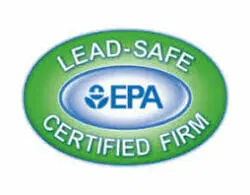Over time, painted walls in your home can get…well, a little dirty. Smudges, mud spots, streaks and more are all likely to appear as time passes. And a house with pets or kids may see these marks appear even sooner. What do you do about them?
You can certainly wash your painted walls, but it’s important to do this the right way. Otherwise, you risk serious problems. Here are the steps you should know before you begin.
Paint Gloss Is Important
Gloss refers to the type of paint ““ how shiny it is, and what sort of additives are in it. Shiny paints with a medium to high gloss are durable as a result. You can wash them without fear of problems, and even scrub lightly to remove some stains. However, low-gloss paints that are flat, eggshell, etc., don’t reflect much light and are very delicate. You can only clean these paints lightly without risking permanent damage, so take care.
Protect Your Floors, Too
For large-scale cleaning, some drops and scatters of dust are unavoidable. You don’t want to track any of that stuff around your house, so protect your floors by using a drop cloth or some towels. This will help keep everything clean.
Start With Basic Dusting
Your walls are probably dusty if you haven’t cleaned them in a while. That dust can interfere when you’re trying to wash heavier smudges, and may even create streaks when you’re finished. Start by dusting the wall. A broom or duster works well here, but you can also use a vacuum duster attachment if you prefer.

Don’t Use Harsh Cleaners
Harsh cleaners are bad for paint ““ and more delicate paints may suffer from even light cleaners. The best place to start is a simple washcloth and a bucket of water. Does this get rid of the stains and dirt? Great! There’s no need to use anything else. If you need something more, try a tiny bit of dish soap in your bucket, or possibly a cup of vinegar. But be careful using cleaners of any kind. If you’re washing a full section of the wall, start at the top and work your way down.
Dry Your Wall
When you finish a section of the wall, quickly dry the wall after with a spare towel (like the ones you’re using on the floor). You don’t want water, even a thin film of it, to stay on the wall any longer than necessary. It could damage or crack your paint as it evaporates.
Need help planning a big painting project? Do you want professional painting services? Call us today to get a free quote! Tar Heel Painters will be happy to answer any questions you have and set up a schedule to do your painting job the right way.





